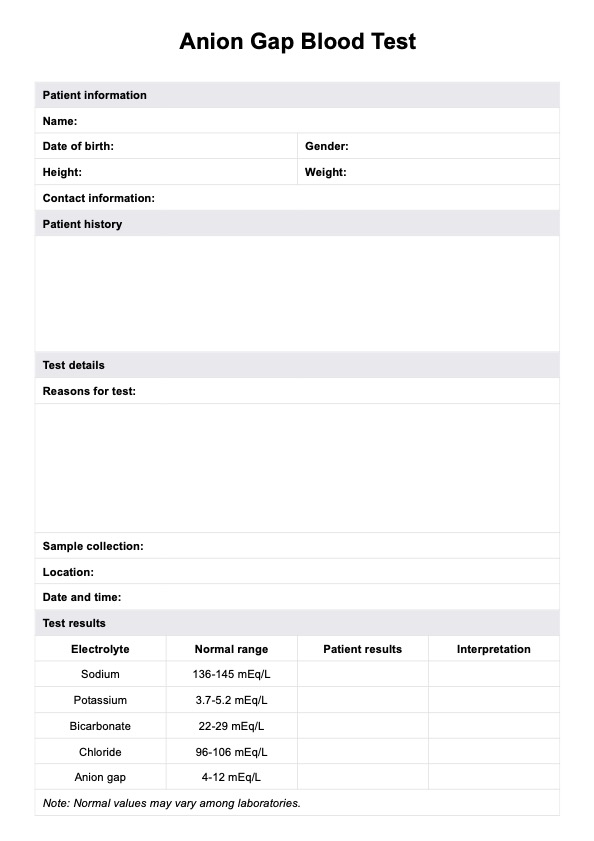Cancers such as multiple myeloma or those causing low albumin levels may be associated with a low anion gap. Low albumin, an essential protein, often results from cancer-related malnutrition or liver involvement.

Anion Gap Blood
Streamline anion gap blood testing and document results effortlessly. Download Carepatron's free Anion Gap Blood Test PDF today and simplify your workflow!
Use Template
Anion Gap Blood Template
Commonly asked questions
Conditions like diabetic ketoacidosis, chronic kidney disease, and lactic acidosis commonly cause a high anion gap. Poisonings (e.g., antifreeze, salicylates) and severe dehydration are also significant contributors.
No, dehydration typically leads to a high anion gap, as it causes metabolic acidosis by concentrating acids in the blood. A low anion gap is more often linked to low albumin or laboratory errors.
EHR and practice management software
Get started for free
*No credit card required
Free
$0/usd
Unlimited clients
Telehealth
1GB of storage
Client portal text
Automated billing and online payments











